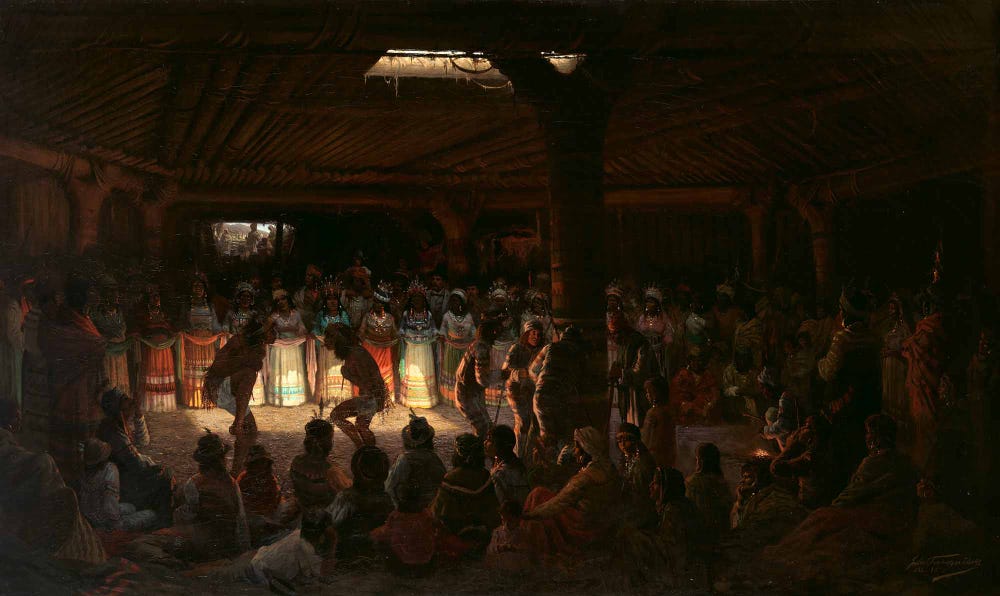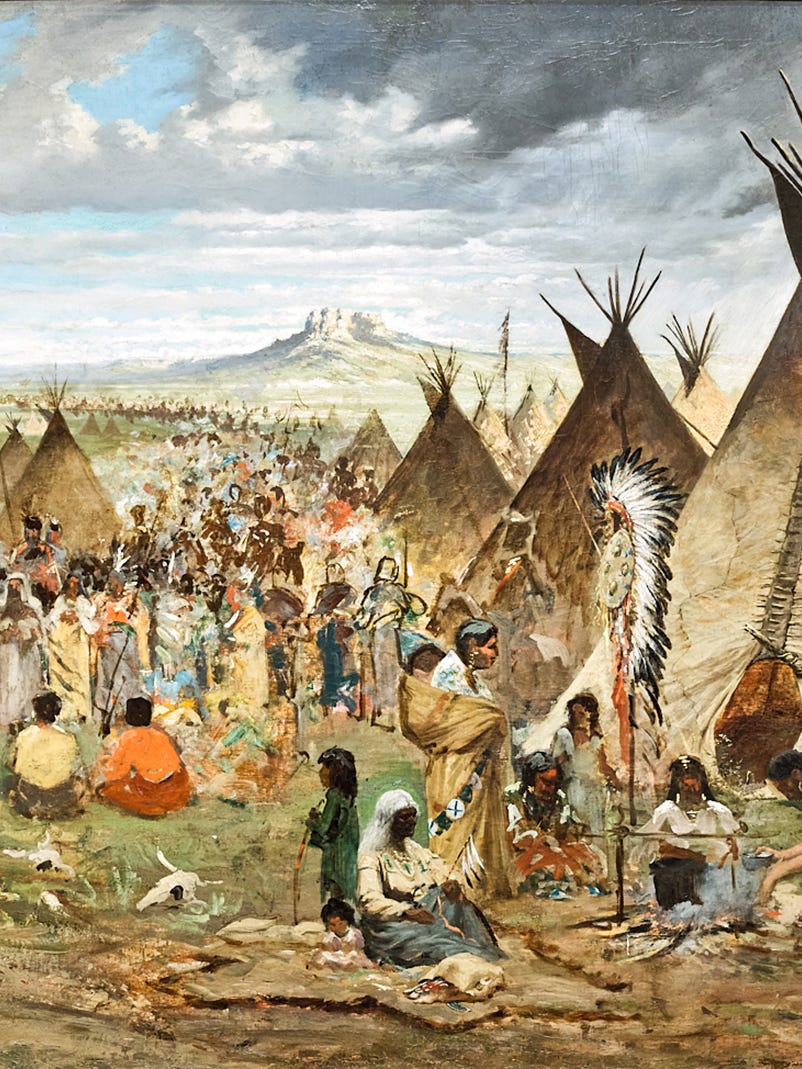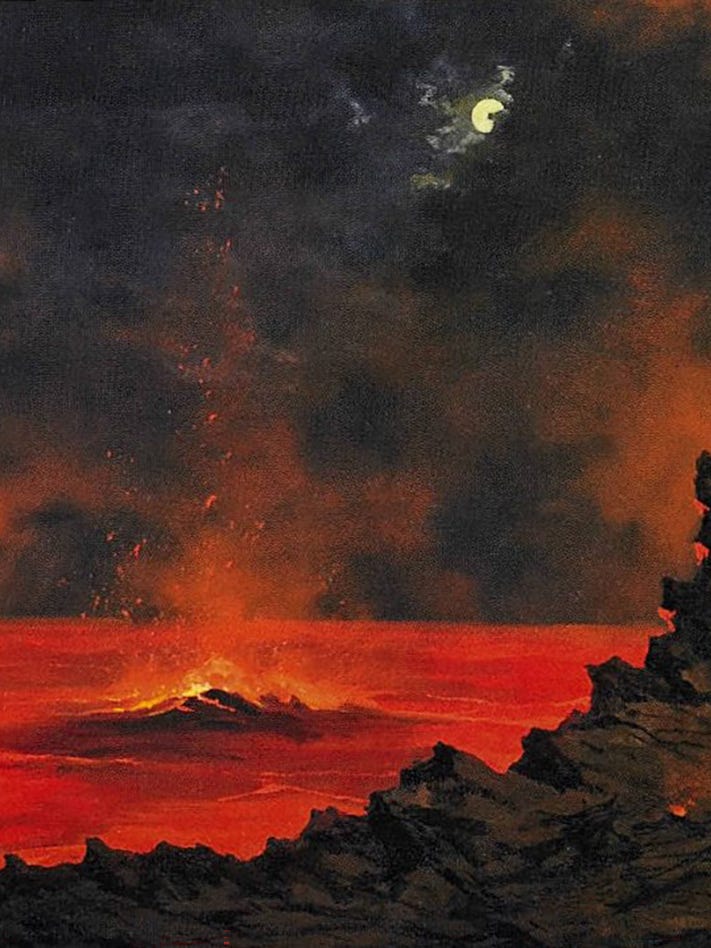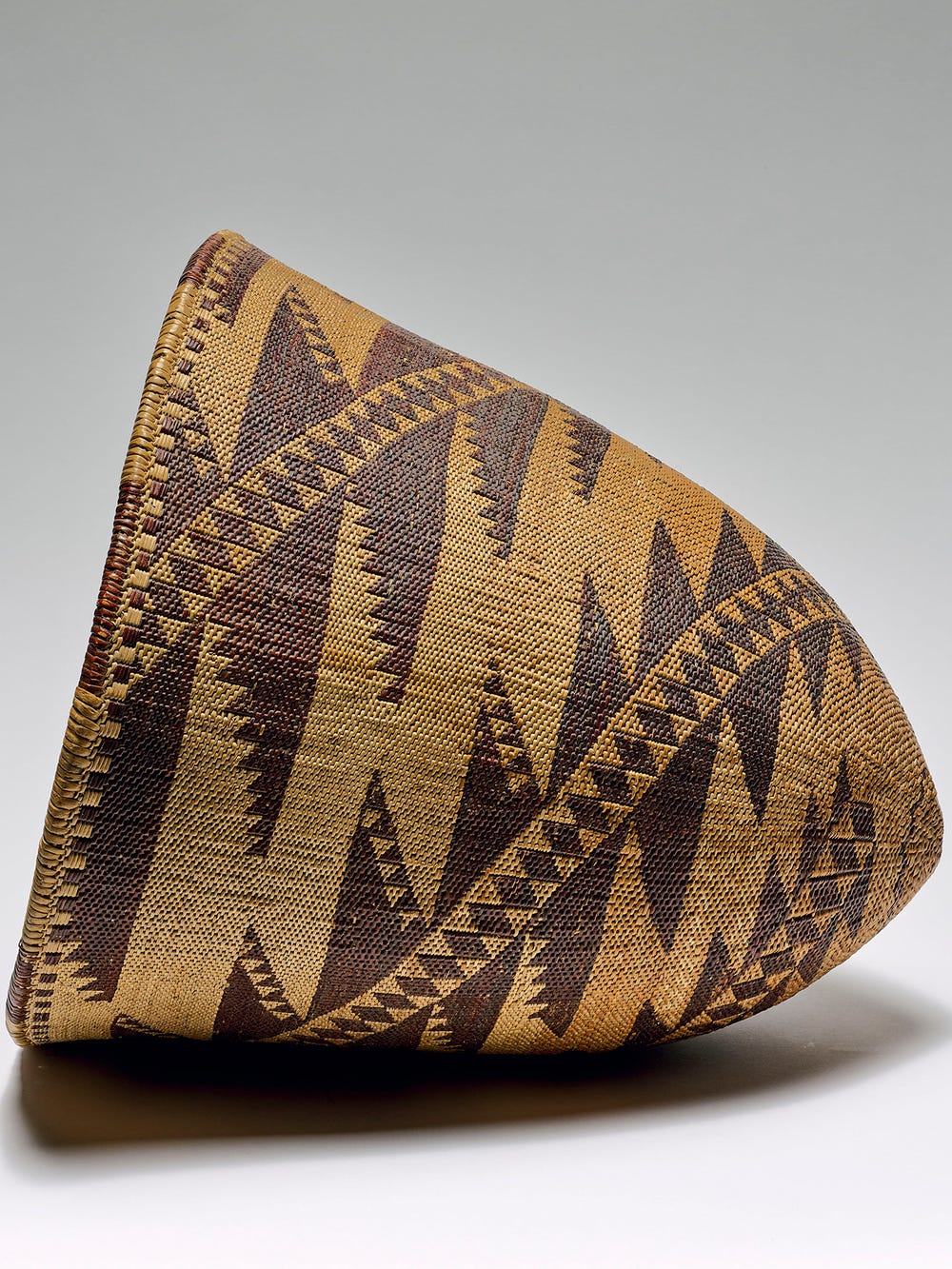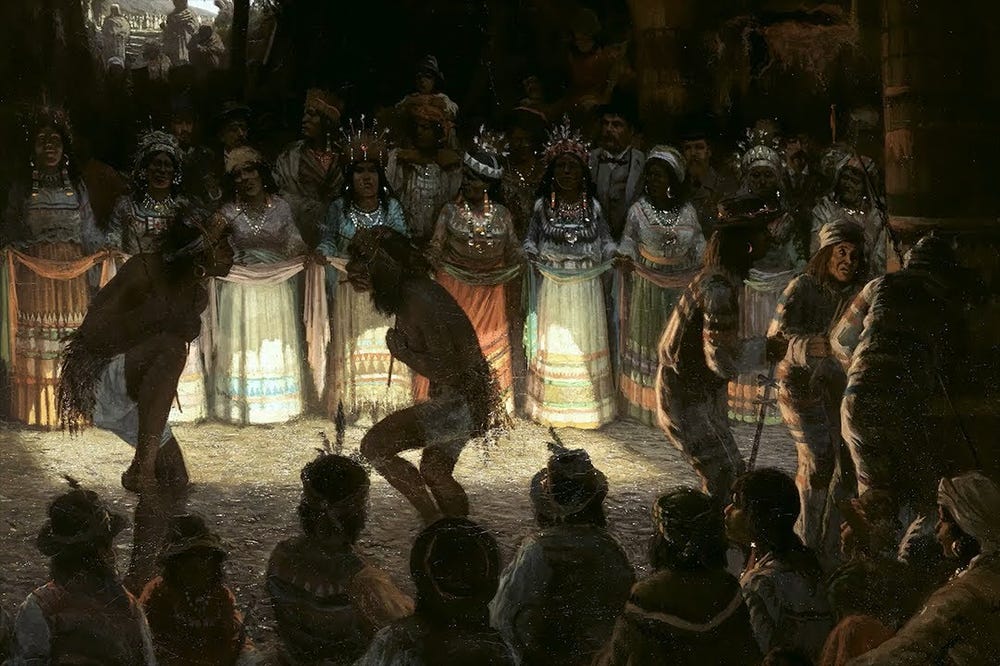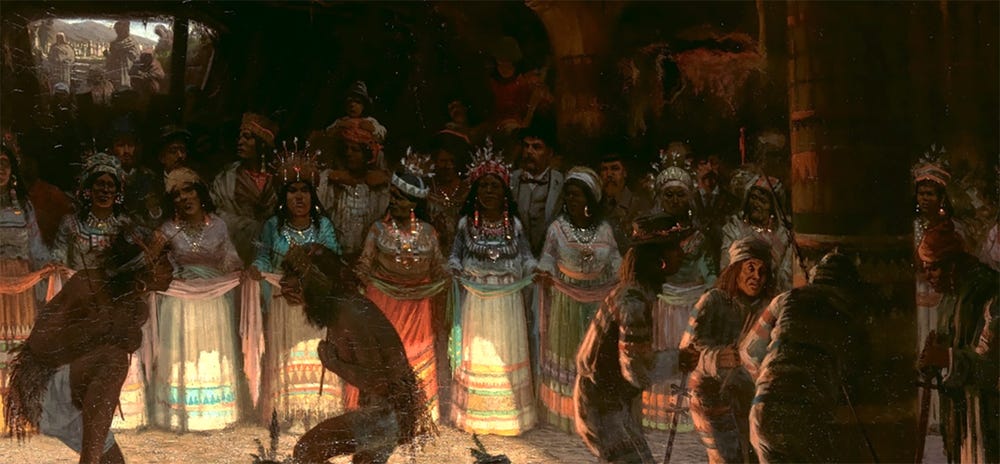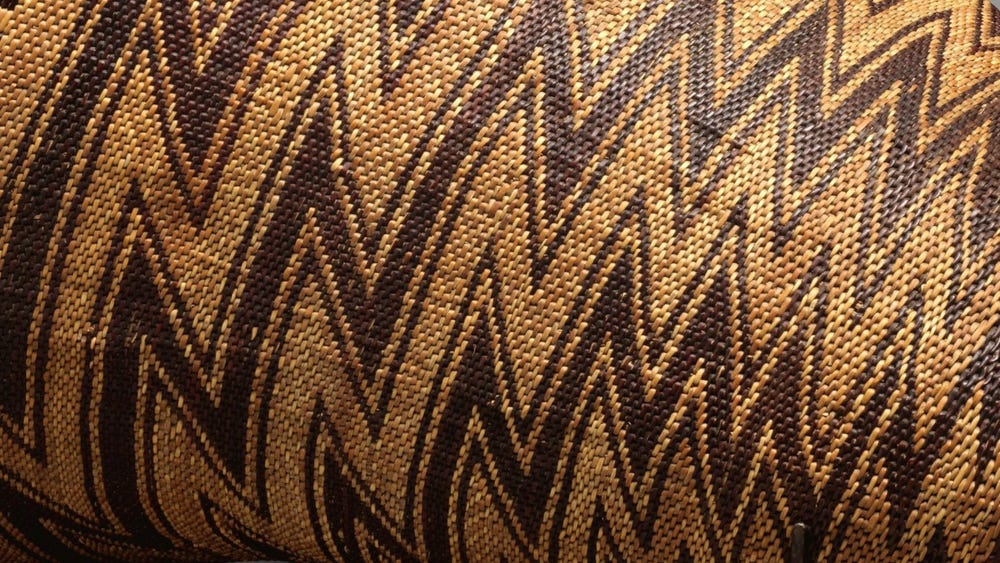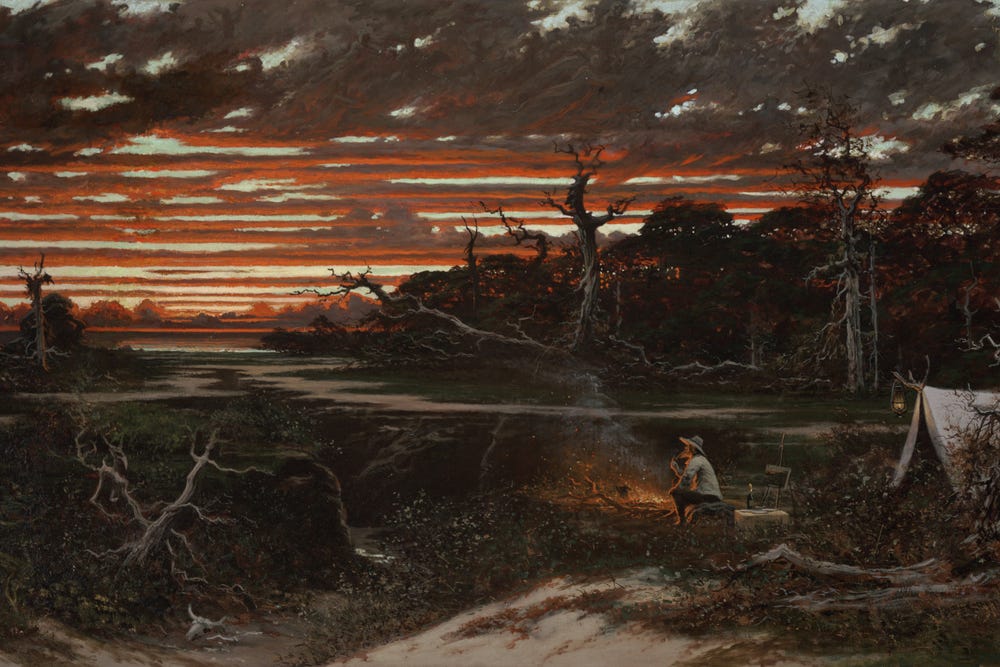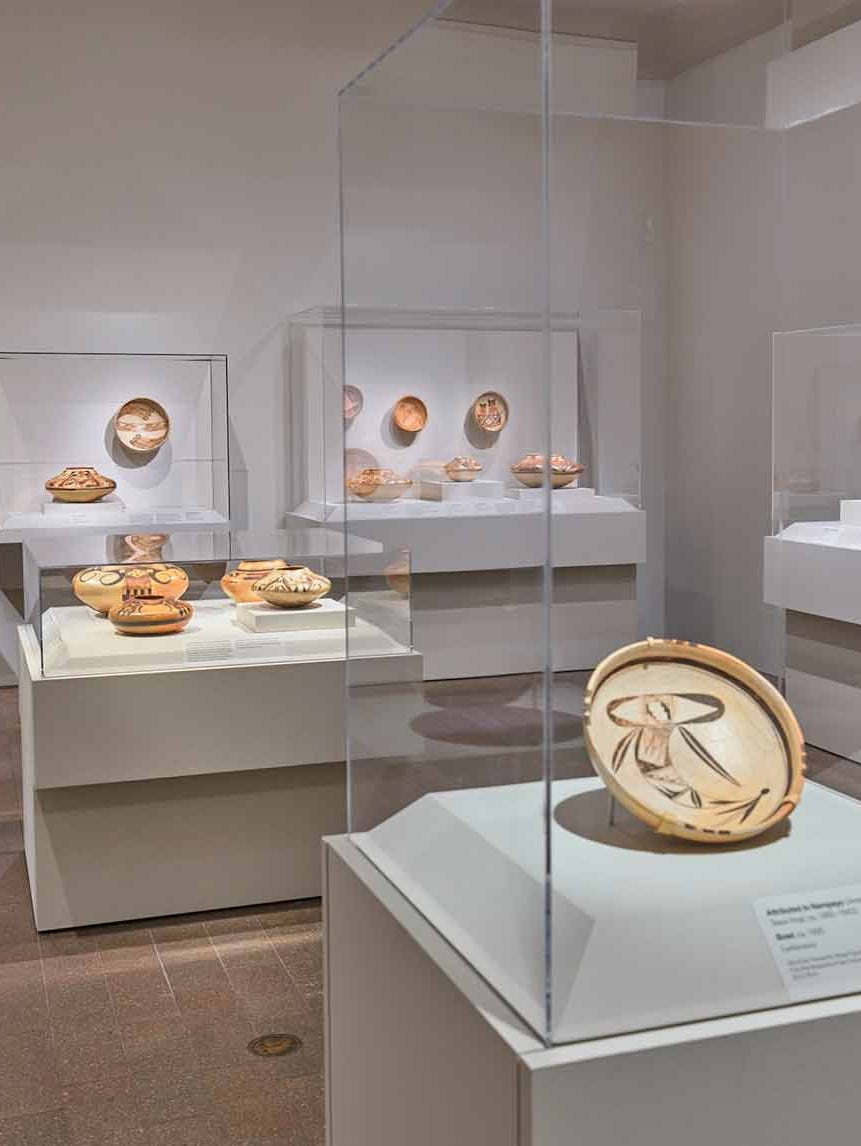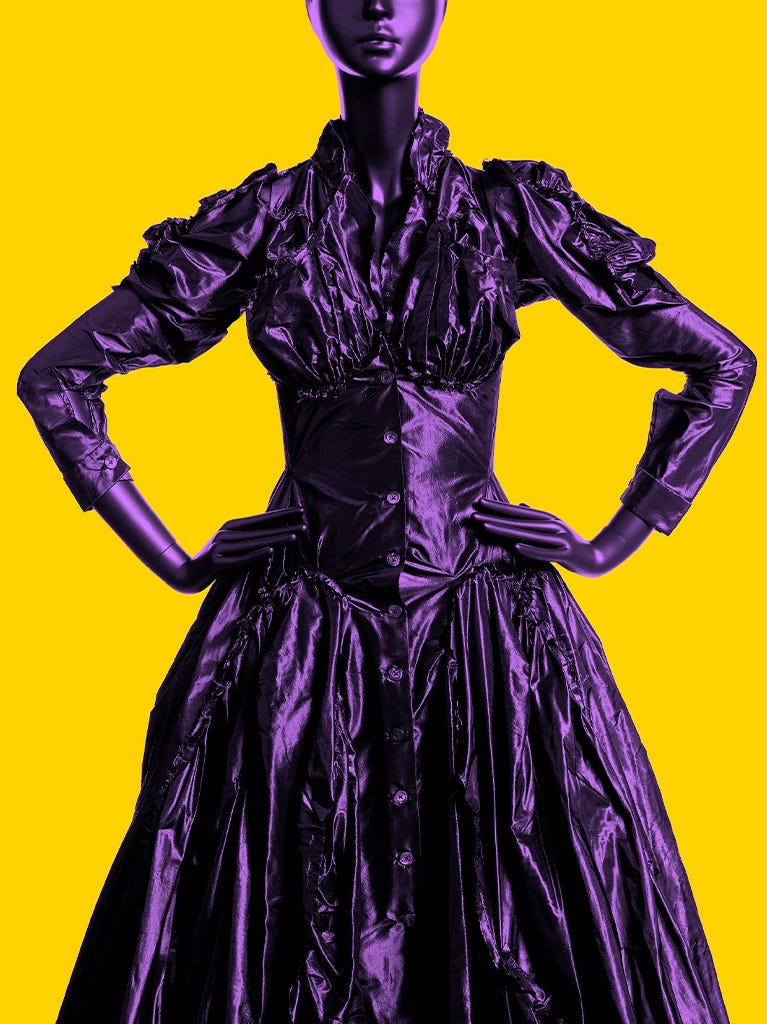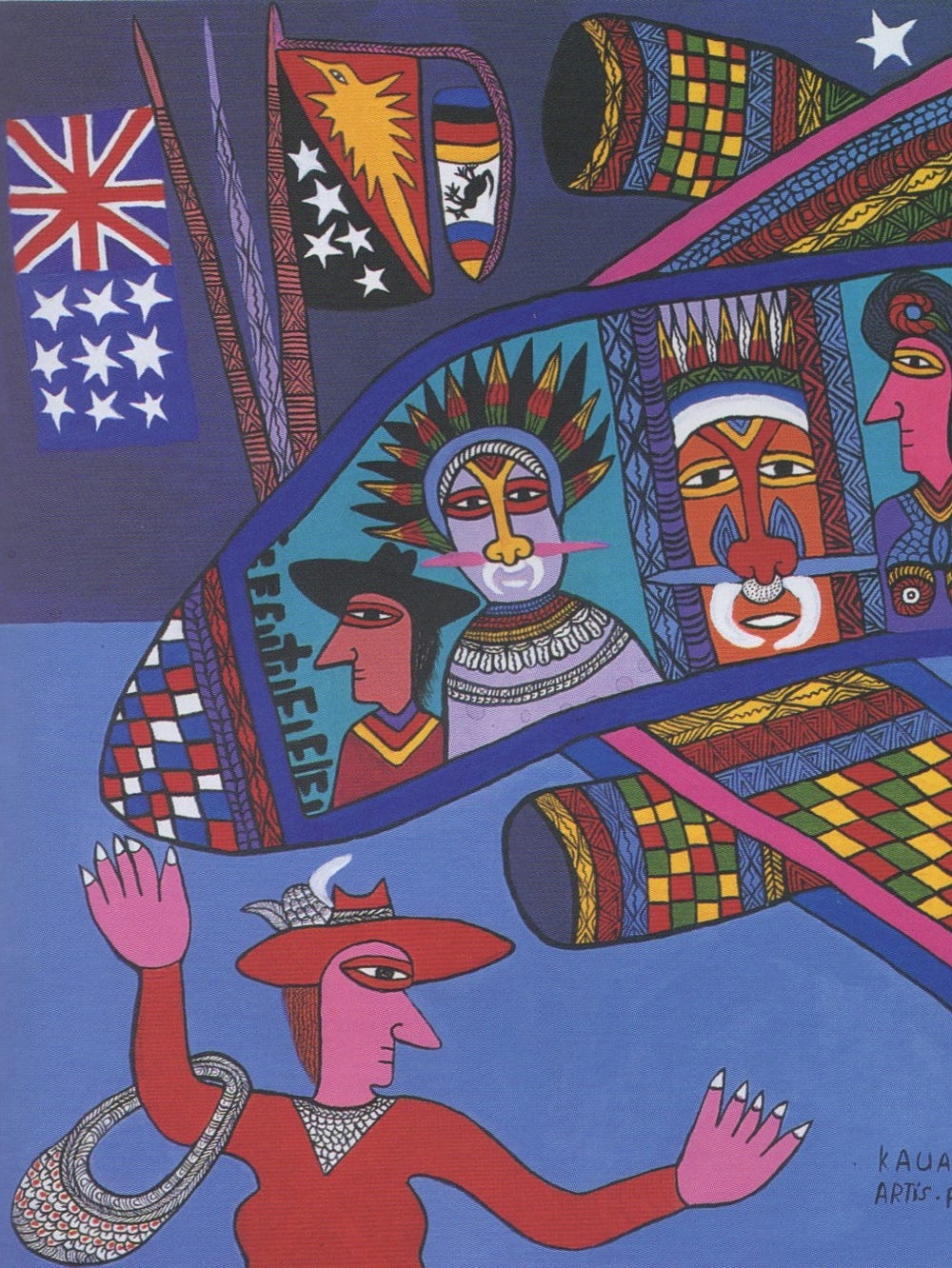Jules Tavernier, Dance in a Subterranean Roundhouse at Clear Lake, California, 1878. Oil on canvas, 48 × 72 1/4 in. (121.9 × 183.5 cm). The Metropolitan Museum of Art, New York, Marguerite and Frank A. Cosgrove Jr. Fund, 2016 (2016.135)
Jules Tavernier and the Elem Pomo
Upon its completion in 1878, Jules Tavernier’s Dance in a Subterranean Roundhouse at Clear Lake, California — which depicts a ceremonial dance (mfom Xe) of the Elem Pomo in an underground roundhouse (Xe-xwan) at Clear Lake (Xa’btin) — was hailed in a San Francisco newspaper as “by far the most remarkable picture ever painted on the Pacific Coast.” The French-born artist’s painting now returns to California for the first time in more than 140 years as the central focus of the Jules Tavernier and the Elem Pomo exhibition at the de Young. The exhibition includes more than a dozen paintings, watercolors, prints, and photographs by Jules Tavernier (1844 – 1889) and puts forth a new interpretation of his career masterwork and his other compositions of the Western United States by offering a multiplicity of voices and perspectives, including those of Pomo cultural leaders and curators.
Dance in a Subterranean Roundhouse at Clear Lake, California chronicles a cultural interaction on November 22, 1875, between California Indians in their homelands and outsiders associated with the Sulphur Bank Quicksilver Mining Company operating on Elem ancestral lands. In the ensuing years, the mine would cause widespread mercury contamination of the lake, with grave and long-lasting repercussions for the Elem community. In this exhibition, presented alongside Tavernier’s Dance in a Subterranean Roundhouse at Clear Lake, California and other major works are more than fifty historic and contemporary Pomo baskets and regalia pieces that celebrate the enduring artistry and resiliency of the Pomo artists over several generations and highlight their continued cultural presence in their homelands today.
In depth
Jules Tavernier
A French Bohemian in the American West: 1873 – 1874
Born in France, Jules Tavernier trained as an artist and exhibited his paintings at the Paris Salon in the 1860s. He arrived in New York in August 1871, initially showcasing his skills as an illustrator with scenes of daily life and American landscapes. Hired by Harper’s Weekly, Tavernier traveled across the country to make a “pictorial record” of what he saw — including the impacts of the Transcontinental Railroad, rapid expansion of white settlement and the US government’s forced relocation of Indigenous communities from their ancestral lands to reservations. Tavernier sought out direct encounters with Native Americans, witnessing the Sun Dance ceremony and meeting Chief Red Cloud and Sitting Bull, a lieutenant headman of the Oglala Lakota Nation. Tavernier completed at least thirty paintings of Indigenous peoples over the course of his career, portraying ceremonies and gatherings, and the awe-inspiring beauty of the contested landscapes.
Artist Reverie in California: 1874 – 1884
By the summer of 1874, Jules Tavernier settled in San Francisco and soon became one of its leading artists. He brought his adventurous spirit to the city and immersed himself in the city’s art scene, garnering commissions from prominent patrons and the interest of the local press. He formed the Artists’ Union and was an early member of the Bohemian Club and San Francisco Art Association, as well as a founder and the first president of the San Francisco Palette Club. Drawing from his academic training, Tavernier adopted the use of vertical-format canvases to paint the towering trees of the Northern California landscapes and is credited with introducing pastel technique to San Francisco.
In 1876, inspired by the region’s atmospheric coastal landscapes, he built a studio in Monterey, California, and helped to establish the Monterey Peninsula Art Colony. During his time in California, Tavernier offered viewers more intimate scenes, often with figures, in vividly lit landscapes, leading the San Francisco Chronicle to report that “there is a little of the natural with a good deal of the fantastical in his pictures.”
The Kingdom of Hawai‘i, 1884 – 1889
Jules Tavernier’s itinerant lifestyle and unpaid bills prompted him to flee San Francisco, traveling to Hawai‘i in search of new subjects for his art. Arriving in December of 1884, he declared it an “artist’s paradise.” In Hawai‘i, Tavernier painted a series depicting the volcanoes, emphasizing the commanding and magnificent forces of nature. His work attracted many patrons, including the monarch of the kingdom, King Kalākaua. The success of these paintings launched what came to be known as the Volcano School and fueled tourism to the islands. Pele, a powerful female deity in Hawai‘i who embodies the many manifestations of volcanism, is revered as an environmental force capable of changing land formations. Well-circulated stories of Pele made Tavernier’s paintings all the more marketable to visitors. He died of a heart attack in his Honolulu studio at the age of forty-five.
The Elem Pomo and Basketmaking
The Elem Indian Colony is located on the shores of Clear Lake, where Southeastern Pomo communities have always lived. Jules Tavernier and the Elem Pomo has special resonance for Robert Geary, Elem Pomo tribal citizen, ceremonial roundhouse leader, and copresenter of the exhibition: “Through this exhibition I hope to educate the world about the beauty of my people and my village. The Elem Xe-xwan [roundhouse] still exists today with the ceremonies and the Elemfo [Elem people] that Tavernier painted in 1878.” The roundhouse was created in the 1870s in response to the great hardships of the Pomo people due to displacement, settler incursion, and decades of genocide and enslavement due to state laws. The circular-shaped structure symbolically represents a basket, providing protection and furtherance for the community. Pomo weavers mastered myriad ways of creating a basket, making Pomo baskets world-renowned for their variety, beauty, technique, and artistry. Baskets reflect the resilience of Pomo communities through the ability and creativity of weavers to adapt to economic and social change, enabling this core aspect of Pomo culture to survive the devastating effects of colonialism. Weaver Clint McKay (Dry Creek Pomo / Wappo / Wintun), whose works are included in the exhibition, states that “to us it [basketry] is the very essence of who we are as Pomo.” Contemporary pieces by Corine Pearce (Redwood Valley Little River Band of Pomo) and Susan Billy (Hopland Band of Pomo Indians) are also on view in the exhibition.
Stories
Film
Virtual programs
Capturing a Moment in Time: California, November 22, 1875
This virtual panel explores the exceptional historical event captured by Jules Tavernier in his painting “Dance in a Subterranean Roundhouse at Clear Lake, California.” The artwork depicts a cultural interaction between California Indians in their homelands and outsiders — settlers and business investors — on November 22, 1875. Among the more than one hundred Pomo community members taking part in the ceremony are three visitors: Tiburcio Parrott y Ochoa, a San Francisco banker, commissioner of the painting, and new owner of the Sulphur Bank Quicksilver Mining Company operating on Elem ancestral lands; Baron Edmond de Rothschild, his business partner; and Comte Gabriel Louis de Turenne d’Aynac, a French military officer traveling with Rothschild. This panel brings together the participants’ stories for a revealing view of the painting and California history.
Panel Discussion
A panel discussion about Pomo communities and land rights, cultural patrimony, and environmental issues affecting them now. Hear from Robert Geary, Elem Pomo cultural leader and regalia maker, Sherrie Smith-Ferri, Dry Creek Pomo/Bodega Miwok scholar, Meyo Marrufo, Eastern Pomo artist and curator, and Christina E. Snider, tribal advisor to Governor Gavin Newsom.
Gallery
More info
Sponsors
Lead Sponsor
Denise Littlefield Sobel
Generous Support
The Bernard Osher Foundation
Janet Barnes and Thomas W. Weisel Family
Additional support is provided by Alec and Gail Merriam.
